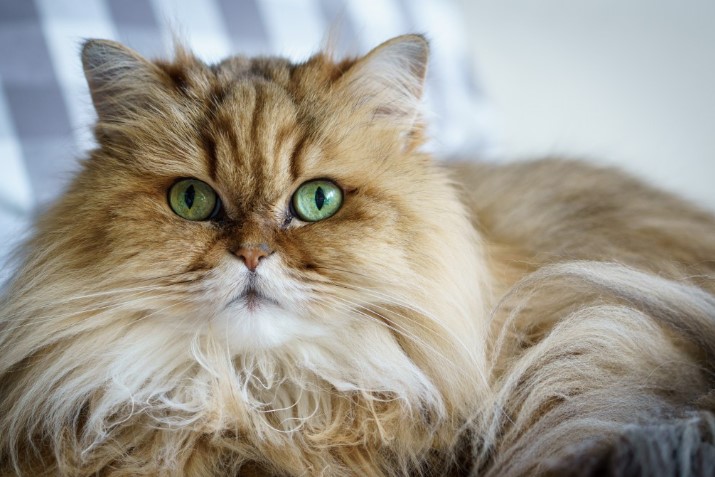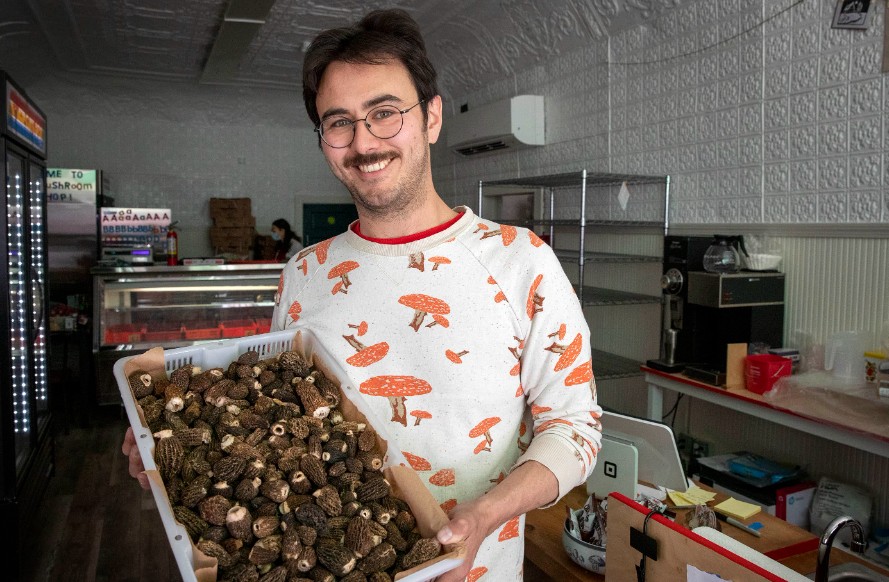One Hawaii woman’s quest to save the feral cats of Lanai at the Lanai Cat Sanctuary.
Driving up a rural gravel road on Lanai, one of the least-touristed of the Hawaiian Islands, a sign reading “Lanai Cat Sanctuary” directs us toward our destination. Upon arrival, we’re greeted with a “Welcome to Purradise” sign and a small bag of dry cat food for our furry friends.
Here, at the Lanai Cat Sanctuary, a no-kill sanctuary for feline friends, 665 cats receive medical care, food, love and a better life than they previously had. The sanctuary has a capacity of about 1,000, but factors like age, health and disposition affect this number.
As we enter the outdoor cat sanctuary, cats of every color and size roam and lounge across lawn chairs and in cat houses. Other cats scatter about to collect head scratches and pets from visitors soaking up the cuteness. Overhead, cats dangle from trees like panthers, sleeping away the afternoon.
A staff member tells me that I’m welcome to freely visit any of the spaces. There are two general visiting areas — the kitten area and the elderly cat area — and I make my way around, kibble bag in hand to see how many of these kitties I can love before we must depart.
The Lanai Cat Sanctuary began in 2004, after founder Kathy Carroll stumbled upon a kitten on her doorstep. She had just moved to Lanai — which is 98{95b18eb6fc4f42efd0d92738dfc3fb79fde21da267a711ecdf0381147c27bb86} owned by Oracle billionaire Larry Ellison — from the continental U.S.and learned how there was no veterinarian on the island. Nor was there an animal control or humane society.
The kitten needed medical care, and for her to get it, she took the ferry to Maui, rented a car and drove to a vet.

One of hundreds of cats at the Lanai Cat Sanctuary, a no-kill sanctuary for feline friends.
The Great WentThe effort to find care for the kitten led her to begin trapping, spaying, neutering and returning cats on Lanai to help manage the out-of-control population, mainly due to the large number of feral cats on the island.
A few years later, conservationists discovered a large ground-nesting bird colony up in the mountains of Lanai — a food paradise for the feral cats roaming the area, and a huge problem for these endangered birds’ survival.
Conservationists intended to trap and eradicate the cats. To save them, Carroll asked if she could have 30 days to remove as many of the cats as she could. She borrowed a horse corral from the nearby Four Seasons resort, netted it, and relocated all the cats there, about 25 total.
“She thought her job was done, but quickly learned that this was just the beginning,” Keoni Vaughn, executive director of the Sanctuary, told SFGATE.
More cats began showing up at the bird colony, leading conservationists to ask Carroll to remove them. Within a year, she was up to 100 cats at the horse corral, and in 2009, Lanai Cat Sanctuary moved to its current location on almost 4 acres of land.

Visitors are able to feed the cats at the Lanai Cat Sanctuary.
The Great Went
Since then, thousands of cats have been relocated to the sanctuary, where they’re given care and are available for adoption. The organization’s actions have preserved thousands of litters of kittens, as a female cat that’s 6 months of age or older can have two to three litters per year, with three to four kittens on average per litter.
But on Lanai, Vaughn says the problem hasn’t so much been unsterilized pet cats, but feral cats.
Early on, the Sanctuary dealt with the stray and pet cats that weren’t sterilized in Lanai City, but feral cats in remote areas were becoming an issue.
“With a human population of about 3,000 on Lanai, pet cats aren’t the problem,” Vaughn said. “We bring into the Sanctuary about 200 cats a year, and 95{95b18eb6fc4f42efd0d92738dfc3fb79fde21da267a711ecdf0381147c27bb86} of them are truly feral, living in remote areas, having never seen a human.”
These feral cats are a major threat to Lanai’s native bird population: the endangered Hawaiian petrel, which nests up in the mountains in ground burrows; the wedge-tailed shearwater, which nests in burrows as well and the Hawaiian coot and Hawaiian stilt, which both build nests in floating vegetation in wetland areas.
All of these native species are at risk of being killed by feral cats, so sterilizing them and releasing them back into the wild isn’t enough. The Sanctuary continues to work with conservationists to remove the cats away from nesting areas and provide them with a safe, permanent home at the Sanctuary. This way, both the birds and the cats can continue to co-exist.

The cats have plenty of places to lounge and hang out.
The Great Went“The native birds were here first, and humans introduced the cats to the area,” Vaughn said. “So, if there’s an opportunity to save both, we’re going to try and do that.”
Sanctuaries like the Lanai Cat Sanctuary can fill a unique and useful role in a comprehensive management plan for domestic cats, according to Grant Sizemore, Director of Invasive Species Programs for the American Bird Conservancy, which endorses the sanctuary. Cats are cared for in a safe and secure location to live out the rest of their days, and it also protects birds and other wildlife, too.
However, Sizemore also notes that all cat owners should embrace responsible ownership, which includes sterilization, vaccination, identification and vet care. “Don’t let them roam, as if they’re not sterilized, they’ll contribute to the population,” he said. “And even if they are sterilized, a roaming cat contributes to harming native birds and wildlife.”
Sizemore says that numerous cat removal strategies — including reporting cats to animal control, reaching out to animal shelters, contacting rescues and sanctuaries to even returning cats to their owners — are all exhausted before euthanasia is an option. “It looks a lot like what we do with dogs,” he said.
“We don’t let feral dogs run wild, so we shouldn’t with cats either.”

One of hundreds of cats at the Lanai Cat Sanctuary, a no-kill sanctuary for feline friends.
The Great WentToday, Lanai still doesn’t have a veterinarian living on the island. The sanctuary flies in a veterinarian and technicians from Honolulu almost weekly, and they help the sanctuary staff perform all medical work from a state-of-the-art mobile veterinary clinic, complete with anesthesia machines and an X-ray machine.
“It’s a full surgery clinic on wheels,” Vaughn said.
And because the local community doesn’t have an on-island vet, the sanctuary loans out its mobile clinic to the vet, who goes out twice a month into Lanai City and offers vet care for owned pets.
In exchange for the sanctuary loaning out its mobile vet unit, the veterinarian continuously spays and neuters all small animals for free to keep populations under control.
If interested in adadopting from the Lanai Cat Sanctuary, there are two methods. If you fall in love with a cat while visiting, but can’t take the cat home, you can adopt in place, which costs $360 a year and includes monthly photos of your furry friend, plus updates on how they’re doing.

Cats at the Lanai Cat Sanctuary can climb and nap wherever they please. Tall fences around the property and some netting keeps them from escaping.
The Great WentTo adopt a cat and take it off-island, adopters will need to pay for flights and accommodations to get the cat to its new home. The sanctuary also helps coordinate travel.
Last year, 100 cats were adopted into new homes. “Ninety-five percent of our cats are adopted off island and to visitors from the mainland,” Vaughn said.
The Sanctuary also takes donations and has an Amazon Wish List.
Visitors can also volunteer with the Sanctuary as part of the Malama Hawaii Program, which provides special discounts and even free nights at participating hotels. Volunteers at the Sanctuary receive free, limited-edition gear and their tasks can include landscaping, painting, brushing cats and even socializing with the cats.
Editor’s note: SFGATE recognizes the importance of diacritical marks in the Hawaiian language. We are unable to use them due to the limitations of our publishing platform.







